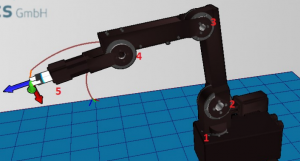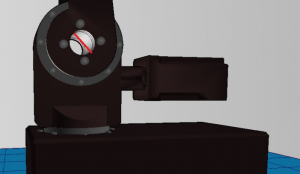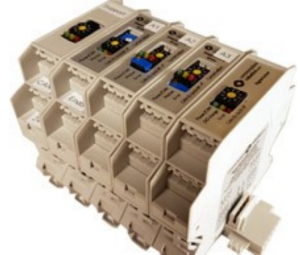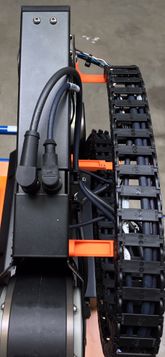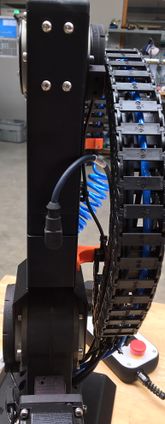Difference between revisions of "Robot Files and Project Files"
| Line 79: | Line 79: | ||
*2 sockets: use file names not containing AE | *2 sockets: use file names not containing AE | ||
||[[file:DCi_motor_encoder.jpg|thumb|165px|DCi with motor encoder. Correct project file does not contain AE: e.g. robolink_5Axis_Small.prj]] | ||[[file:DCi_motor_encoder.jpg|thumb|165px|DCi with motor encoder. Correct project file does not contain AE: e.g. robolink_5Axis_Small.prj]] | ||
| − | [[file:DCi-output_encoder.jpg|thumb| | + | [[file:DCi-output_encoder.jpg|thumb|165px|DCi with output encoder. Correct Project file contains AE: e.g. robolink_5Axis_Small_AE.prj]] |
|} | |} | ||
Example 1: If I have a robolink Dci small version robot with 5 degrees of freedom and output encoders, | Example 1: If I have a robolink Dci small version robot with 5 degrees of freedom and output encoders, | ||
Revision as of 21:11, 14 August 2018
Which project configuration/robot configuration file should I use?
To find out, you need to find your robot type. The table below shows how to identify your robot.
Project config files
The name of the project configuration file that you need to use in CPRog for your robot is composed as follows. Use the table below to identify the filename:
In general, any project file in the Directory C:\CPRog\Data\Projects\ is comprised as follows:
<Robot-type>_<number_of_joints>_<size>_<Encoder_Type>.prj
Answering the questions in the table below, should narrow your choice down to a single file in the folder C:\CPRog\Data\Projects\.
Robot config files
There are robot configuration files, in a sub directory of C:\CPRog\Data\Robots\. The sub directory uses similar nomenclature table below.
For example: <Robot-type>_<number_of_joints>_<size>
Answering the questions in the table below, should narrow your choice down to a single file in the folder C:\CPRog\Data\Projects\.
Before making any changes to these files, create a backup of the respective files.
The file names of the robot files/folders should not be changed, as they are referenced from within the project files.
If you do change the filename, you will need to edit the Project file as well.
Always keep a backup of the files that you make changes to. If you loose one of these files, you could re-install re-install CPRog on top of the existing CPRog installation (i.e. without removing the existing CPRog version first.) This overwrites all files in the CPRog installation directory (usually c:\CPRog). So you'll likely want to keep a backup or rename that directory prior to the installation.
Filename nomenclature
For robots with external control electronics
Example: If I have a robolink D big version robot with 5 degrees of freedom and motor encoders,
- my project file is
robolink_5Axis_big.prj - my robot file is
IGUS_ARM_5DOF_BV.xml
For Robots with internal control electronics, such as the robolink DCi
This is for robots with control electronics that are integrated into the base of the robot. You won't have external modules on a DIN rail and a whole bunch of cables coming out of the robot base.
Example 1: If I have a robolink Dci small version robot with 5 degrees of freedom and output encoders,
- my project file is
robolink_5Axis_small_AE.prj - my robot file is
IGUS_ARM_5DOF_SV_AE.xml
Example 2: If I have a robolink Dci small version robot with 5 degrees of freedom and output encoders,
- my project file is
robolink_5Axis_small.prj - my robot file is
IGUS_ARM_5DOF_SV.xml
Loading the Project Configuration File
You can load the project configuration file by clicking on the circular icon at the top left of CPRog, selecting "Open Project" and then selecting the corresponding file located in C:\CPRog\Data\Projects\.
Which project configuration file am I currently using?
You can see which project file is currently in use in the title bar of CPRog, while the CPRog window is not maximised to fill the screen. (You will notice that when it is maximised, the text in the title bar is unreadable.)

